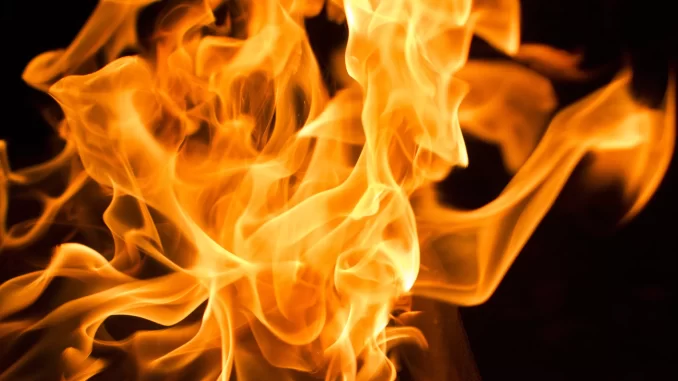
Governor Issues Burn Ban throughout State
By Hank Russell
Governor Kathy Hochul, with the New York State Department of Environmental Conservation (DEC), announced a statewide burn ban in effect starting on October 2 due to increased fire risk and continued dry conditions. According to the DEC, Long Island is at a moderate risk for fire danger.
The DEC defines a moderate risk as such: “[W]ith the exception of lightning fires in some areas, the number of starts is generally low. Fires in open cured grasslands will burn briskly and spread rapidly on windy days. Timber fires spread slowly to moderately fast. The average fire is of moderate intensity, although heavy concentrations of fuel, especially draped fuel, may burn hot. Short-distance spotting may occur, but is not persistent. Fires are not likely to become serious and control is relatively easy.”
Hochul said the ban will be in effect for 14 days from Oct. 2 to Oct. 15 and will be revaluated prior to expiration. New Yorkers can help prevent fires in communities and in the backcountry by complying with the prohibition on most outdoor fires and protect water supplies by continuing to conserve water whenever possible.
“The ongoing nice weather is great for watching fall foliage or gathering with friends, but it also presents a higher risk for fires that put homes, businesses and our brave first responders at risk,” Hochul said. “Many regions are already in a drought watch or warning due to the dry conditions, and with the fire risk rising in some parts of the state, it is important to keep everyone safe by implementing this temporary burn ban.”
The statewide burn ban now in effect prohibits the starting of outdoor fires for purposes of brush and debris disposal, as well as all uncontained fires, including campfires, and open fires used for cooking. Backyard fire pits and contained campfires less than three feet in height and four feet in length, width or diameter are allowed, as are small, contained cooking fires. Burning garbage or leaves is already prohibited year-round in New York State and several municipalities have burn bans currently in effect.
“New York State is fortunate to have some of the most qualified wildland firefighters in the country protecting our forests and communities,” said DEC Commissioner Amanda Lefton. “New Yorkers can help keep them and our resources safe by working to prevent fires in the first place.”
Since the beginning of August, Forest Rangers have responded to 64 wildland fires across the state. Fires may become serious and controlling them difficult unless attacked successfully while still small.
As previously reported by Long Island Life & Politics, a series of fires broke out in eastern Brookhaven and the Town of Southampton back in March. At least 700 acres were burned during the blaze. Detectives from the Suffolk County Police Arson Section ruled the cause of the fires to be accidental. Fires broke out on March 8 in Center Moriches, East Moriches, Eastport and Westhampton. The fires have been 100% knocked out, with 80% of the fire in Westhampton being contained.
The DEC also issued a drought watch for Long Island. A watch, according to the DEC, is the first of four levels of state drought advisories (“watch,” “warning,” “emergency” and “disaster”). While there are no statewide mandatory water use restrictions in place under a drought watch, residents are strongly encouraged to voluntarily conserve water. Local public water suppliers may require conservation measures, depending upon local needs and conditions.
To protect water resources, water users are encouraged to voluntarily reduce outdoor water use and follow these tips:
- Water lawns only when necessary, choose watering methods that avoid waste, and water in the early morning to reduce evaporation and maximize soil hydration;.
- Reuse water collected in rain barrels, dehumidifiers or air conditioners to water plants.
- Raise lawn mower cutting heights. Longer grass is healthier with stronger roots and needs less water.
- Use a broom, not a hose, to clean driveways and sidewalks.
- Fix leaking pipes, hoses and faucets.
- Wash only full loads of dishes and laundry.
- Take shorter showers or fill the bathtub partly.
- Install water saving plumbing fixtures.
- Don’t run the tap to make water hot or cold.
- Wash cars less frequently.
For assistance with water wells that may be affected by drought:
- Contact a registered water well contractor to discuss appropriate options for individual needs.
- Check that the well is dry due to drought and no other issues. Sometimes the solution is quite simple, like a broken valve or electrical issue. The only way to definitively tell if a well is dry is to measure the water level in the well.
- Conserve water year-round to help prevent the effects of drought on water wells.
- Consider adding a water storage tank to help get through dry periods.
- Clean or redevelop existing wells.
- Deepen existing wells or drill a new well. If drilling a new well, properly decommission the old well to protect groundwater quality.

